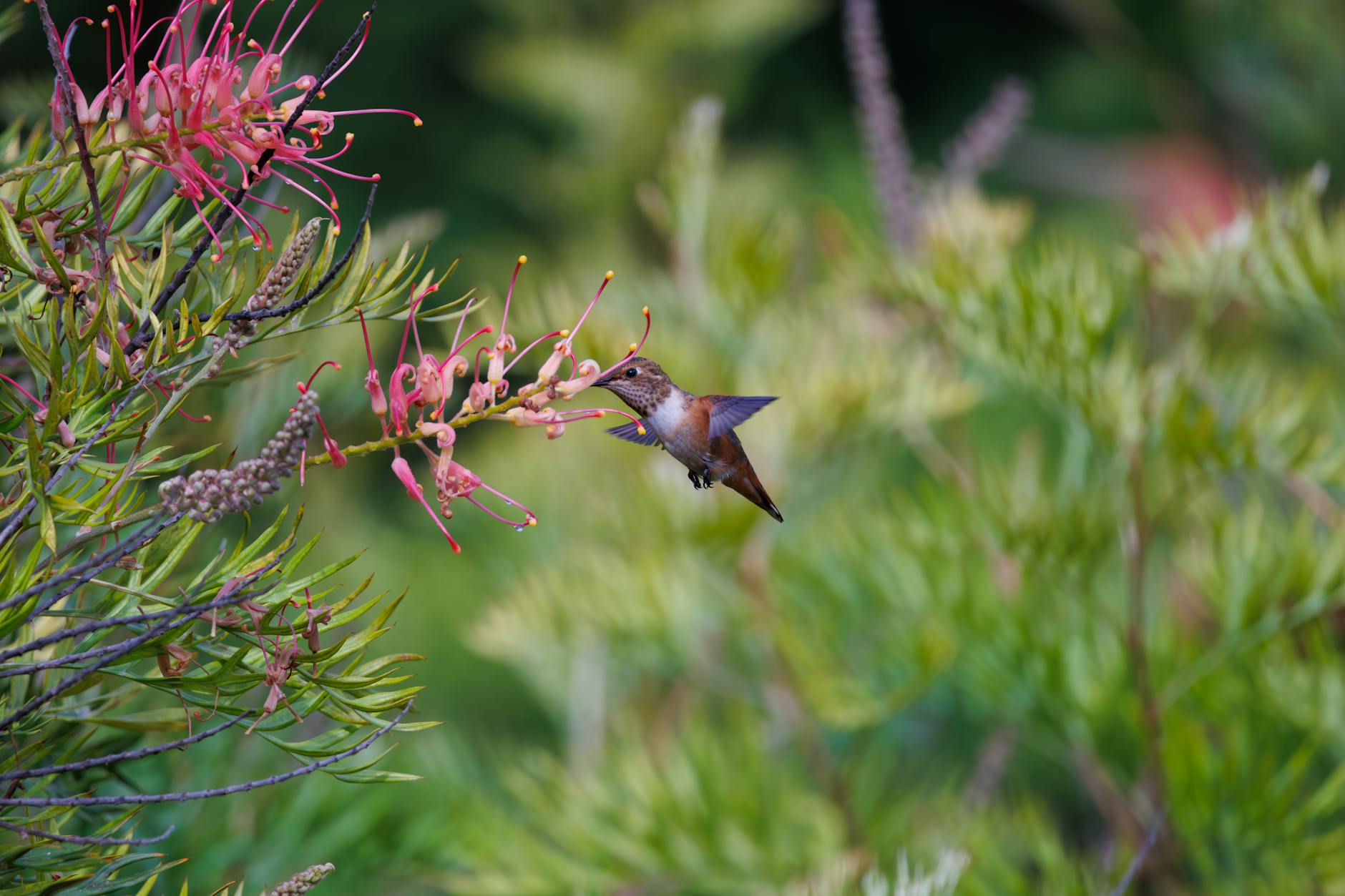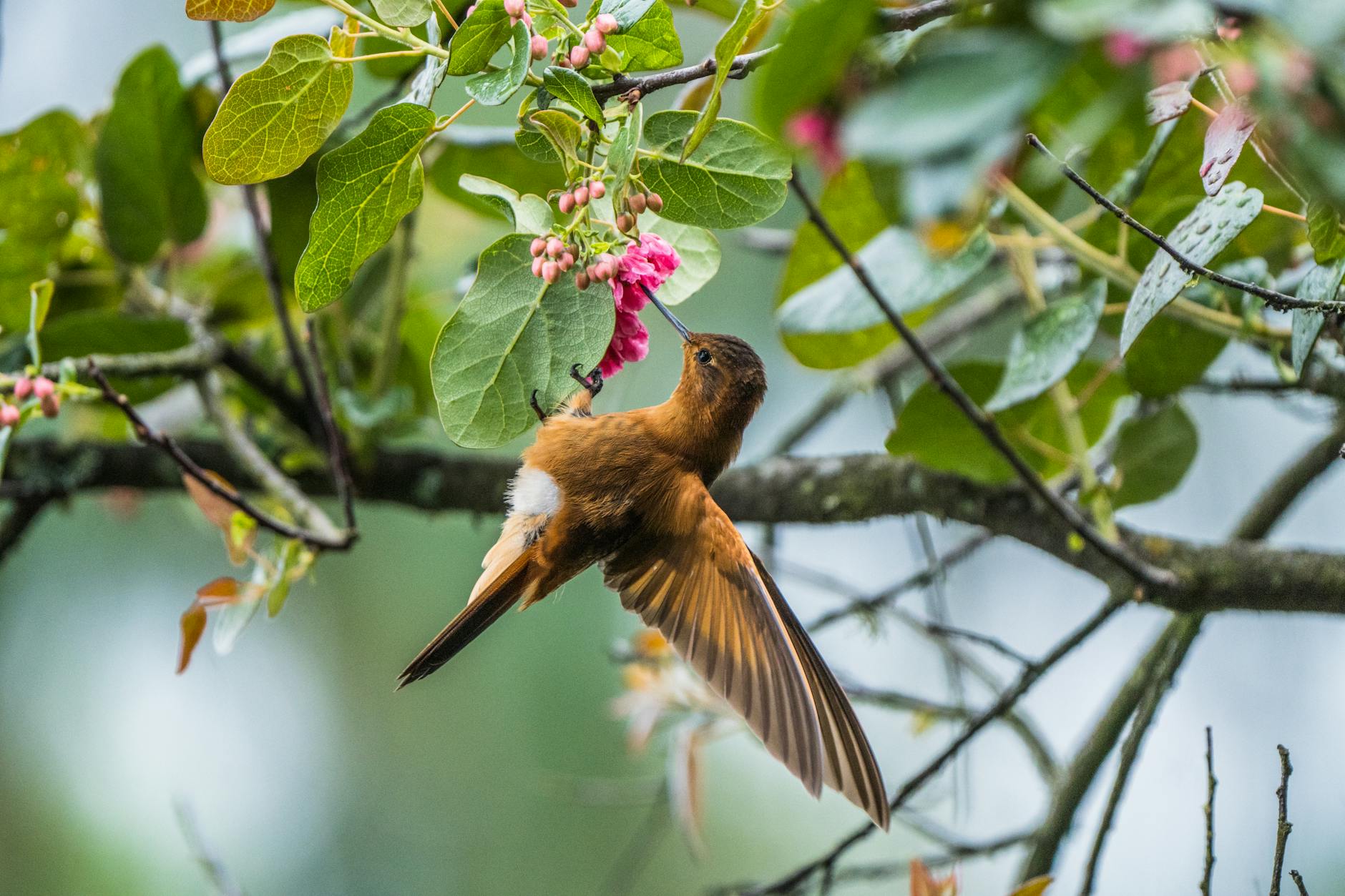How Hummingbirds Shape Our World: The Importance of Their Role in Pollination
Hummingbirds are far more than just tiny, dazzling birds—they’re essential players in the survival of countless plants. Their unique ability to hover mid-air, combined with their sharp memory and vibrant energy, makes them key pollinators. As they sip nectar from flowers, they transfer pollen, ensuring the continuation of diverse ecosystems. Without these little creatures, many flowers would struggle to thrive, disrupting the balance of nature itself.
The Role of Hummingbirds in Pollination
Hummingbirds are more than just mesmerising creatures. Their seemingly effortless flight and unique feeding habits play a crucial role in pollination. By helping plants reproduce, they secure not only their own future but also that of diverse ecosystems.
The Feeding Mechanism
Hummingbirds aren’t just sipping nectar—they’re bridging the gap between plants. Their long, needle-like beaks are perfectly suited to extract nectar deep within flowers. As they insert their beaks, grains of pollen stick to their heads and feathers. With each visit to another flower, these tiny birds unknowingly transfer pollen, kickstarting the reproductive process for plants.
Interestingly, their rapid wing beats and ability to hover make them efficient compared to other pollinators. Unlike bees, they can navigate flowers that are difficult to access, making them indispensable to many plant species. Did you know hummingbirds can drink up to two times their body weight in nectar every day? That’s a significant amount of pollen transfer happening as a by-product of their energy needs. Learn more about hummingbirds and pollination here.

Photo by Chris F
Adaptations of Flowers
Some flowers have evolved remarkable traits to attract hummingbirds. Brightly coloured blooms, especially in shades of red and orange, are like beacons for these birds. Why red? Because unlike bees, hummingbirds can see red hues more vividly, making it a strategic advantage for plants.
But there’s more—flowers that rely on hummingbird pollination often have tubular shapes. Why? Their elongated structure perfectly accommodates the bird’s beak and tongue. Additionally, these flowers typically have minimal scent. Hummingbirds rely on sight rather than smell, so strong fragrances aren’t necessary.
Let’s not forget about their timing. Flowers pollinated by hummingbirds often bloom during the day, syncing with the birds’ active hours. This synergy between bird and bloom showcases nature’s brilliance. Read about plants specifically designed to lure hummingbirds.
Impact on Plant Diversity
Hummingbirds play a remarkable role in sustaining plant diversity. Their movements from flower to flower carry not just nectar but also the promise of life for countless species. These interactions help maintain the vibrancy of ecosystems, ensuring that native plants flourish and adapt.
Supporting Native Species
Hummingbirds are champions for native plants. Their feeding behaviours enable plants to reproduce by transferring pollen between flowers. Unlike wind-pollinated plants, species reliant on hummingbirds have no alternative routes to thrive. For example, plants with tubular or elongated flowers depend fully on these tiny birds for reproduction.
This relationship between birds and plants ensures that native flora remain a vital part of the ecosystem. Without it, the extinction of certain flowers could start a chain reaction, impacting everything from the food chain to soil health. A great example of this interconnectedness can be explored here.
Additionally, hummingbirds’ selective feeding fosters the proliferation of plants offering the richest nectar. This natural selection improves the genetic health of plant populations, ensuring they stay resilient against diseases and environmental stress. Want to know how hummingbirds choose their favourites? Find more here.

Photo by Athena Sandrini
Co-evolution
Hummingbirds and flowers share an extraordinary story of co-evolution. Over millions of years, they’ve shaped each other’s features to create a perfect partnership. Flowers adapted striking hues like vivid reds and oranges, while hummingbirds developed long, slender beaks ideally suited for accessing nectar.
For instance, passionflowers are thought to have evolved after hummingbirds emerged, developing elongated shapes that match the birds’ specialised feeding habits. This mutual adaptation can also be seen in how certain flowers bloom only when hummingbirds are active—timing isn’t coincidental, it’s co-evolution at its finest. Read more about it here.
Moreover, hummingbirds exhibit remarkable memory, remembering which flowers hold their favourite nectar. This behaviour ensures frequent visits to the same species, strengthening the evolutionary link between plant and pollinator. Scientists believe such interactions have significantly influenced plants’ diversification, particularly in regions like the tropics. Explore further research on plant diversification driven by hummingbirds here.
It’s a symbiotic dance—plants need hummingbirds to reproduce, and hummingbirds rely on the sustenance plants provide. Together, they exemplify the incredible balance of nature.
Hummingbirds and Ecosystem Health
Hummingbirds are indicators of a thriving ecosystem. Their mere presence signifies environmental balance due to their reliance on abundant resources. But their role extends far beyond being a measure of nature’s vitality. These tiny birds are crucial contributors to nature’s interconnected web.
Food Web Connections
Hummingbirds are not just pretty visitors to gardens; they serve as key players in the food web. While their primary diet revolves around nectar, they also consume small insects and spiders for protein. These prey are essential for their energy-intensive lifestyles and reproduction, especially during nesting season.
At the same time, hummingbirds themselves are prey for other animals. Predators like larger birds, snakes, and even some mammals view them as nutritious snacks. This positioning makes them both consumers and energy providers, threading them into the intricate food web. Their role is similar to a thread in a tapestry—remove them, and the structure begins to unravel.
Additionally, by aiding plant reproduction through pollination, hummingbirds support the growth of seeds and fruits. These provide nourishment to countless herbivores and omnivores further up the food chain. This cycle demonstrates how even the tiniest creatures have ripple effects across ecosystems. Discover more about how hummingbirds balance ecosystems here.

Photo by Ant Armada
Effects on Biodiversity
Hummingbirds are biodiversity champions. By pollinating a wide range of plants, they promote genetic variation across species. A single visit transfers pollen between flowers, leading to healthier, more resilient plant populations.
Their impact becomes even more noticeable when considering plants that are entirely reliant on them. Certain flowers, like those with tubular shapes, are specifically adapted to hummingbird feeding. Without these birds, those plants would face decline, potentially disrupting habitats housing other species.
Moreover, hummingbirds indirectly influence other pollinators. When they prioritise certain plants, they leave others for bees or butterflies, creating a balanced dynamic in pollinator roles. This division of labour ensures even the lesser-attractive plants receive their share of attention.
Hummingbirds’ work as pollinators directly affects fruiting plants, which feed countless animals. Think of berries or tiny seeds that serve as staples for wildlife. In this way, they act as silent architects of habitats, ensuring resources are distributed where needed most. To learn about their role in biodiversity, check out this link.
Conservation of Hummingbirds
The survival of hummingbirds is under constant threat due to various human and natural factors. These intricately beautiful creatures play a pivotal role in maintaining the ecological balance, but without intervention, their populations could dwindle rapidly. Below, we discuss two key challenges to their existence: habitat loss and climate change.
Habitat Loss: Explore how habitat destruction affects hummingbird populations

Photo by Juan Felipe Ramírez
Hummingbirds are particularly vulnerable to habitat loss due to their specific needs. Forests, meadows, and nectar-rich gardens all serve as vital habitats for these pollinators. However, rapid urbanisation and deforestation are shrinking these spaces, leaving hummingbirds with fewer places to feed, nest, and thrive.
Agricultural expansion and logging have destroyed millions of acres of vegetation. This destruction directly impacts the nectar corridors hummingbirds rely on during migration. Without consistent food sources, their migration patterns break down, weakening their populations. Critical habitats, like those found in cloud forests and lowland rainforests, are now disappearing at alarming rates.
One study indicates that 60% of hummingbird species face ongoing population declines due to habitat degradation. To combat this, conservation initiatives need to prioritise preserving forest ecosystems and restoring native plant species. Interested in taking action? Learn more steps about protecting hummingbird habitats here.
Climate Change: Discuss the impact of climate change on hummingbird migration and food sources
Climate change poses another serious risk to hummingbirds. With rising temperatures and erratic weather patterns, the natural landscapes they depend on are rapidly changing. Flowering times for nectar plants are being disrupted, and food scarcity becomes more pronounced as seasons grow unpredictable.
Moreover, studies predict that certain species could lose up to 90% of their breeding grounds due to climatic shifts. Take high-altitude species, for example—they’re running out of room to relocate as temperatures rise. If the flowers they depend on bloom earlier than their migratory arrivals, they’re left without sustenance. This mismatch can have catastrophic effects on their ability to survive and reproduce.
Even night temperatures add strain. Some hummingbirds enter a state called torpor to conserve energy. However, fluctuating temperatures could disrupt this delicate balance, leaving the birds vulnerable. Learn more about how climate change is reshaping hummingbird habitats here.
Addressing the impact of climate change requires both local and global solutions. Protecting flowering plants, reducing greenhouse gas emissions, and creating eco-friendly migratory corridors are just a few ways we can help hummingbirds adapt to these new challenges.
The Importance of Protecting Hummingbirds
Hummingbirds are more than graceful garden visitors. Their role in pollination makes them crucial to ecosystems worldwide. They pollinate various flowering plants, ensuring ecological balance and plant reproduction. Without them, we risk losing both plant diversity and environmental stability.
Why Hummingbirds Matter in Pollination
Hummingbirds are irreplaceable in their roles as pollinators. They feed on nectar from flowers, carrying pollen as they go. Many plants, especially those with tubular or intricate flowers, rely solely on hummingbirds for reproduction. These birds are often the last link in the chain, keeping plant populations flourishing. Want to dive deeper into their impact? Learn more about hummingbirds and pollination here.

Photo by Janice Carriger
These tiny birds ensure the survival of countless plant species, indirectly supporting the animals and insects dependent on those plants. Their work goes deep into the system, showcasing how even small creatures can have huge impacts.
The Growing Threats to Hummingbirds
Hummingbirds face severe threats due to human activities and environmental changes. Habitat destruction caused by urban sprawl and deforestation is the leading issue. With fewer places to nest or feed, their survival becomes increasingly uncertain. For broader protection efforts, visit hummingbird conservation initiatives.
Another pressing issue is climate change. Fluctuating weather patterns disrupt the flowering cycles of plants that hummingbirds rely on. These shifts can leave them without food, especially during migrations. Challenges like these highlight the need to address global environmental concerns.
How You Can Help
Protecting hummingbirds doesn’t require monumental efforts—it starts in your garden. Planting native flowers, avoiding chemical pesticides, and providing water sources can help these birds thrive locally. At larger scales, supporting conservation projects aimed at habitat restoration and climate action makes a difference. See more on conservation needs here.
Preserving hummingbirds isn’t just about saving a bird; it’s about maintaining the delicate balance of nature they embody. Everything from plant species to entire ecosystems has a stake in the hummingbird story. Building awareness now ensures their place in our world tomorrow.










